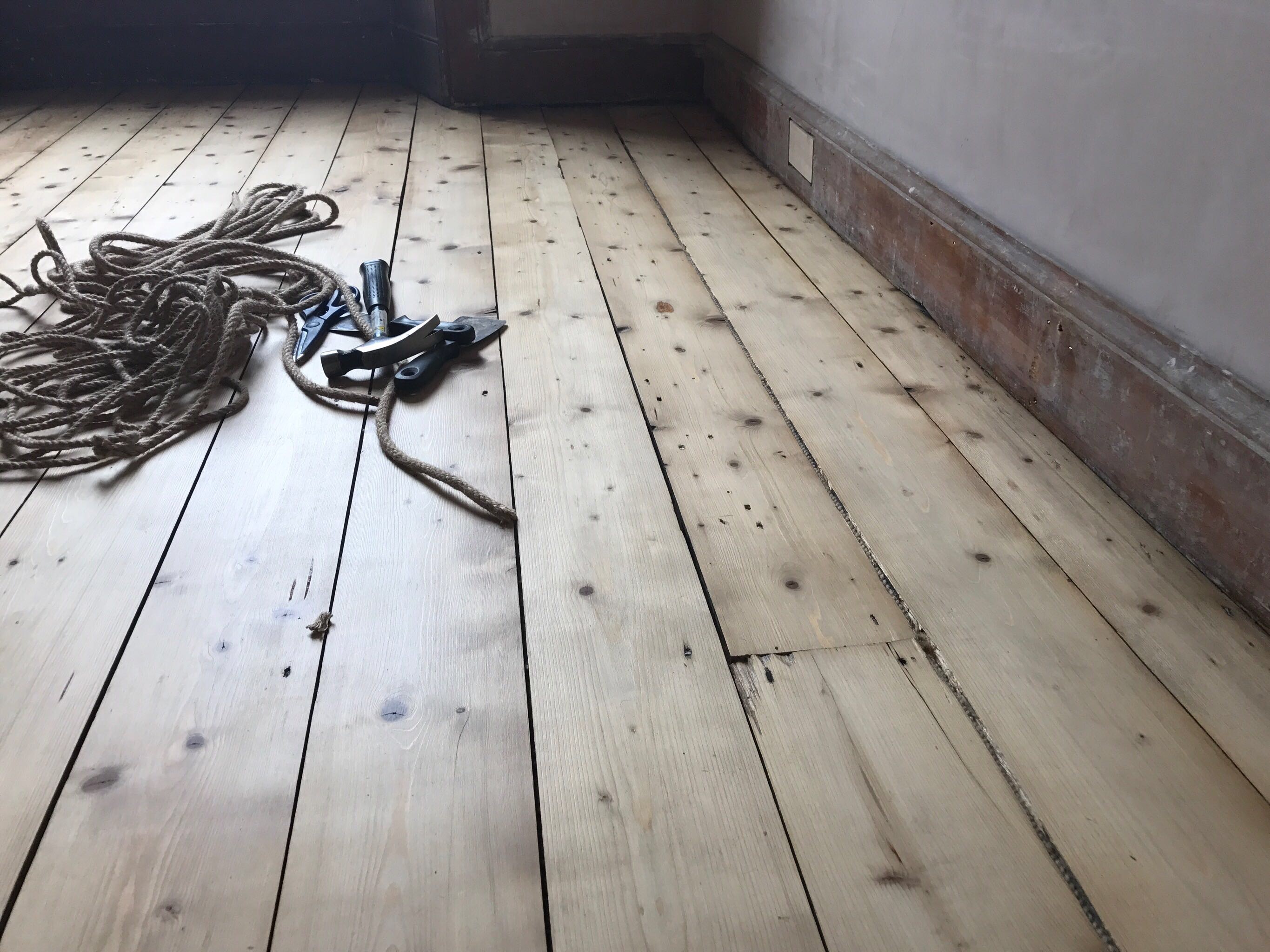Our floorboards are all tongue and groove, which is great for reducing noise and draughts. Over the years though, boards have been lifted, which means cut or broken tongues. You can feel a bit of a breeze blowing through those gaps, and on windy winter days (plenty of those in Edinburgh!) it’s very noticeable.
I use jute rope to stuff into these gaps, roughly 1.5-2 times as thick as the gap is wide. By twisting the rope tighter and pushing it down into the gaps, you can completely stop the draught, and because it’s just rope it has some flexibility to expand and contract with the wood, rather than crack like many fillers would.
I use a scraper, both working it in by hand and gently tapping it in with a hammer in the tighter spots, and a selection of 4, 6, 8, and 12mm rope. A second scraper is handy to protect the edge of damaged boards, by putting it in the gap on the damaged then tapping the top in on the other side. Don’t go too far as you don’t want the rope to fall out the other side!

I’ve heard of people using black dye, or food colouring even, to get a closer colour match to the other gaps in the floor, but I don’t think the natural rope is particularly noticeable or offensive, so don’t bother with that.
That lovely image of the floor, with the pile of rope and the tools scattered across it, is lovely – the muted lighting and the fresh timber of the boards with that gorgeous jute roping, make it look just as if it were taken during a interruption in the work 120 years’ ago, when your tenement was first built …